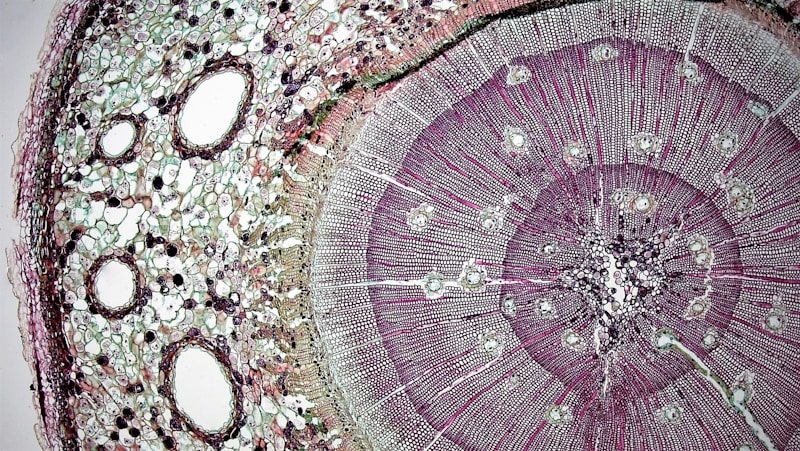9 Questions
What is the primary mechanism for capturing light energy in plants?
Photosynthesis
What is the largest plant genome known?
Wheat
What is the function of the water-filled central vacuole in plant cells?
Storage of water and waste
What is the primary source of organic compounds for medicinal and industrial use?
Plants
What is the process by which plants obtain energy from sunlight?
Photosynthesis
What is the function of pattern-recognition receptors in plants?
Defense
What is the primary role of legumes in agriculture?
Fix nitrogen
What is the function of mycorrhiza in plant growth?
Nutrient uptake
What is the role of weeds in managed environments?
Are undesirable
Study Notes
Kingdom of Photosynthetic Eukaryotes: Key Points
-
Plants form the kingdom Plantae, historically encompassing all living things that were not animals, and included algae and fungi. Current definitions exclude fungi and some algae.
-
Plants obtain energy from sunlight through chloroplasts derived from endosymbiosis with cyanobacteria, and perform photosynthesis using chlorophyll.
-
There are about 380,000 known species of plants, with the majority producing seeds. Plants provide a substantial proportion of the world's molecular oxygen and are the basis of most of Earth's ecosystems.
-
Plant cells have a large water-filled central vacuole, chloroplasts, and a strong flexible cell wall outside the cell membrane.
-
Most plants are multicellular and differentiate into multiple cell types to form tissues and organs with different physiological functions.
-
Photosynthesis is the primary mechanism for capturing light energy using chlorophyll in chloroplasts.
-
Plants grow in response to physical and biotic factors in their environment, and can tolerate and repair DNA damage caused by physical and biotic stresses.
-
Plants reproduce sexually and asexually, with sexual reproduction involving complex lifecycles and alternation of generations.
-
Plants use pattern-recognition receptors to recognize pathogens and trigger a protective response.
-
Plants have some of the largest genomes among all organisms, with the largest plant genome belonging to wheat.
-
Plants are distributed worldwide and form the dominant physical and structural component of many habitats, serving as primary producers in most terrestrial ecosystems.
-
Many animals have coevolved with plants, with flowering plants evolving pollination syndromes and various mechanisms of seed dispersal. Many plants have fungi associated with their root systems in a mutualistic symbiosis known as mycorrhiza.The Importance of Plants
-
Legumes have Rhizobium nitrogen-fixing bacteria in nodules of their roots, which fix nitrogen from the air for the plant to use.
-
Some plants are parasitic and can be extremely harmful to their plant hosts.
-
Epiphytes grow on other plants without parasitizing them and can support diverse arboreal ecosystems.
-
Some plants are carnivorous and trap small animals to obtain mineral nutrients.
-
Competition for shared resources reduces a plant's growth. Shared resources include sunlight, water, and nutrients.
-
Humans depend on plants for food, either directly or as feed in animal husbandry. Agriculture includes agronomy for arable crops, horticulture for vegetables and fruit, and forestry for timber.
-
Medicinal plants are a primary source of organic compounds, both for their medicinal and physiological effects, and for the industrial synthesis of a vast array of organic chemicals.
-
Nonfood products from plants include essential oils, natural dyes, pigments, waxes, resins, tannins, alkaloids, amber, and cork.
-
Thousands of plant species are cultivated for their beauty and to provide shade, modify temperatures, reduce wind, abate noise, provide privacy, and reduce soil erosion.
-
Plants have been used as model organisms in basic biological research, genetics, and paleobotany.
-
Weeds are commercially or aesthetically undesirable plants growing in managed environments and can become invasive, damaging existing ecosystems.
-
Many plants produce toxins to protect themselves from herbivores, which can be harmful to humans and livestock.
Test your knowledge on the fascinating kingdom of photosynthetic eukaryotes with this informative quiz! Discover key points on the biology, diversity, and importance of plants, including their role as primary producers in ecosystems, their coevolution with animals, and their uses in agriculture, medicine, and industry. Challenge yourself to remember the unique adaptations and reproductive strategies of plants, as well as their fascinating relationships with other organisms like fungi and nitrogen-fixing bacteria. This quiz is perfect for anyone interested in bot
Make Your Own Quizzes and Flashcards
Convert your notes into interactive study material.





